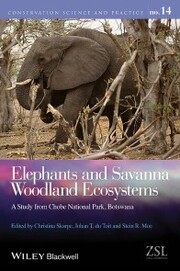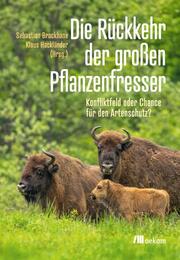Format: EPUB
DRM: Adobe DRM
- Belletristik & Lyrik
- Krimi
- Kinder- und Jugendbuch
- Bilderbücher
- Familie
- E-Reader
- Hörbuch für Erwachsene
- Hörbuch für Kinder
- Reise
- Landkarten & Stadtpläne
- Kalender
- Politik & Wirtschaft
- Gesundheit
- Demenz
- Kochen
- Natur & Tiere
- Regionalia
- Körper und Seele
- Hobby & Basteln
- Humor & Nettigkeiten
- Geschichte & Kultur
- Schulbuch
- Lernhilfen
- Pädagogik
- Psychologie
- Partnerschaft & Erotik
- Fremdsprachige Literatur
- Theologie & Philosophie
- Fantasy & SciFi
- Lifestyle
- New Adult
- Influencer & Blogger
- Graphic Novel
- Manga
- Tickets
- Sprachen
- Biographien
- Sport
- Wissen
- Recht
- Beruf & Karriere
- EDV
- Fahrzeuge
Stein R. Moe is a Professor of Ecology at the Norwegian University of Life Sciences, Norway. Although his scientific works span over four continents, his main focus has been on African savanna ecology. He is currently coordinating a Masters program in tropical ecology and natural resource management in the Department of Ecology and Natural Resource Management. Following several years as a departmental board member, he is now a member of the faculty board at the University.
„E-Book“ steht für digitales Buch. Um diese Art von Büchern lesen zu können, wird entweder eine spezielle Software für Computer, Tablets und Smartphones oder ein E-Book Reader benötigt. Da es verschiedene (Datei-)Formate für E-Books gibt, gilt es dabei einiges zu beachten.
Von uns werden digitale Bücher hauptsächlich in zwei Formaten ausgeliefert: EPUB und PDF. Je nach Verlag und Titel kann zu dem Format eine Form vom Kopierschutz (DRM=Digital Rights Management) gehören. Sie können Format und Form des DRM der Detailansicht des Titels entnehmen.
- Bei E-Books ohne DRM (DRM: Nicht vorhanden) müssen Sie lediglich sicherstellen, dass Ihr E-Book Reader, Software oder App das Format (EPUB oder PDF) öffnen kann.
- Der Kopierschutz per Digitalem Wasserzeichen (DRM: Digitales Wasserzeichen) speichert Daten zum Download des Buches direkt in der Datei, die ggf. gerichtlich ausgelesen werden können. Genau wie E-Books ohne DRM können diese Titel ohne Beschränkung kopiert und auf verschiedenen Geräten gespeichert werden, sind allerdings rückverfolgbar.
- Wenn ein Format mit "hartem" Kopierschutz gekoppelt ist (DRM: Adobe DRM), besteht zusätzlich die Notwendigkeit, dass Sie einen kostenlosen Adobe® Account besitzen (genannt Adobe® ID). Nach dem Kauf eines solchen Titels erhalten Sie per Download zunächst eine Übertragungsdatei (URLlink.acsm). Stellen Sie sicher, dass in Ihrer Software (z.B. Adobe® Digital Editions), Ihrer App oder in ihrem Reader die zuvor erwähnte Adobe ID (Ihre E-Mail-Adresse und Ihr Passwort) hinterlegt sind.
Beim ersten Öffnen der Übertragungsdatei im E-Book-Programm oder auf dem Reader wird das Buch untrennbar mit der Adobe ID verknüpft, mit der die Software / das Gerät angemeldet ist.
!! Sollte zu diesem Zeitpunkt keine ID angelegt sein, kann das E-Book nur auf diesem Gerät (Reader oder Computer) gelesen werden und nirgendwo sonst !!
Achten Sie bei der Übertragung von E-Books darauf, dass die selbe Adobe® ID benutzt wird, wie zum ersten Öffnen.
Da E-Books nur für eine begrenzte Zeit – in der Regel 6 Monate – herunterladbar sind, sollten Sie stets eine Sicherheitskopie auf einem Dauerspeicher (Festplatte, USB-Stick oder CD) vorsehen. Auch ist die Menge der Downloads häufig auf maximal 5 begrenzt.
Die Rückgabe von digitalen Inhalten ist technisch bedingt nicht möglich.
Norman Owen-SmithPreface xviiPart I The Chobe Ecosystems 11. Introduction 3
Christina Skarpe and Stein R. Moe2. The Chobe Environment 7
Christina Skarpe and Susan Ringrose3. Elephant-Mediated Ecosystem Processes in Kalahari-SandWoodlands 30
Johan T. du Toit, Stein R. Moe and Christina SkarpePart II The Substrate 414. Historical Changes of Vegetation in the Chobe Area 43
Christina Skarpe, Håkan Hytteborn, Stein R. Moe and Per Arild Aarrestad5. Vegetation: Between Soils and Herbivores 61
Per Arild Aarrestad, Håkan Hytteborn, Gaseitsiwe Masunga and Christina SkarpePart III The Agent 896. Guns, Ivory and Disease: Past Influences on the Present Status of Botswanas Elephants and their Habitats 91
Mark. E. Vandewalle and Kathy. A. Alexander7. The Chobe Elephants: One Species, Two Niches 104
Sigbjørn Stokke and Johan T. du Toit8. Surface Water and Elephant Ecology: Lessons from a Waterhole-Driven Ecosystem, Hwange National Park, Zimbabwe 118
Simon Chamaillé-Jammes, Marion Valeix, Hillary Madzikanda and Hervé FritzPart IV Controllers 1339. Soil as Controller of and Responder to Elephant Activity 135
Christina Skarpe, Gaseitsiwe Masunga, Per Arild Aarrestad and Peter G.H. Frost10. Impala as Controllers of Elephant-Driven Change within a Savanna Ecosystem 154
Stein R. Moe, Lucas Rutina, HåkanHytteborn and Johan T. du Toit11. Buffalo and Elephants: Competition and Facilitation in the Dry Season on the Chobe Floodplain 172
Duncan J. Halley, Cyril Taolo and Stein R. MoePart V Responders 18712. PlantHerbivore Interactions 189
Christina Skarpe, Roger Bergström, Shimane Makhabu, Tuulikki Rooke, Håkan Hytteborn and Kjell Danell13. Elephants and the Grazing and Browsing Guilds 207
Christina Skarpe, Stein R. Moe, MärthaWallgren and Sigbjørn Stokke14. Cascading Effects on Smaller Mammals and Gallinaceous Birds of Elephant Impacts on Vegetation Structure 229
Sigbjørn Stokke, Sekgowa S. Motsumi,Thato B. Sejoe and Jon E. Swenson15. The Chobe Riverfront Lion Population: A Large Predator as Responder to Elephant-Induced Habitat Heterogeneity 251
Harry P. Andreassen, Gosiame Neo-Mahupeleng, Øystein Flagstad and PerWeggePart VI Elephants in Social-Ecological Systems 26916. Human Dimensions of Elephant Ecology 271
Eivin Røskaft, Thor Larsen, Rapelang Mojaphoko, A. H. M. Raihan Sarker and Craig Jackson17. Elephants and Heterogeneity in Savanna Landscapes 289
Johan T. du Toit, Christina Skarpe and Stein R. MoeIndex 299















